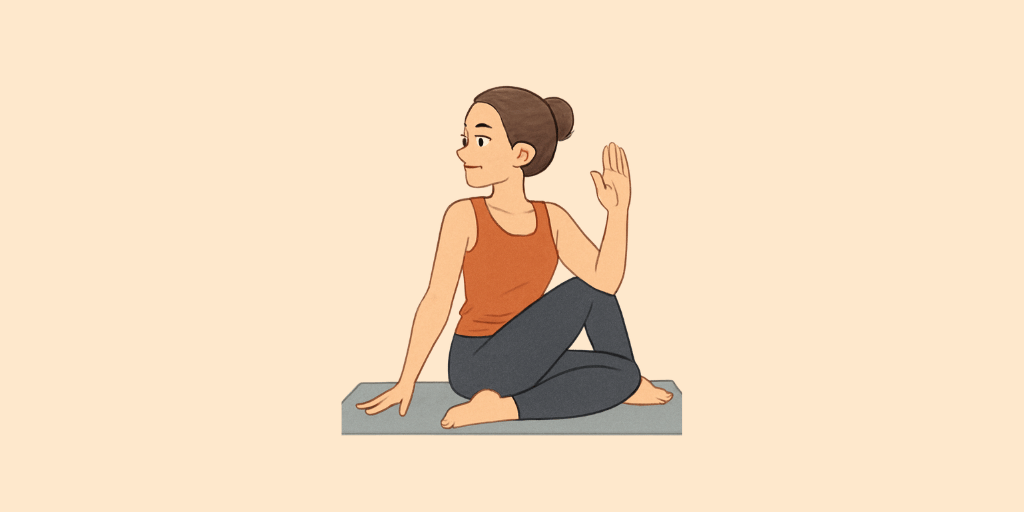Sanskrit Name: वक्रासन
English Name: Twisted Pose
Description:
Vakrasana, referred to as the Twisted Pose, is an accessible seated spinal twist that aids in enhancing flexibility, digestion, and correcting posture. The term originates from Sanskrit, where “Vakra” (वक्र) translates to “twisted” or “curved,” and “Asana” (आसन) means “pose.” This asana serves as a beginner-friendly option compared to more complex twists like Ardha Matsyendrasana and is frequently incorporated in Hatha Yoga for promoting spinal health and detoxification.
To practice Vakrasana, sit with your legs stretched out, bend one knee, and rotate your torso towards the bent leg, utilizing your opposite elbow for support. This position stretches the spine, stimulates internal organs, and boosts digestion by activating the abdominal area. Additionally, it alleviates back stiffness, enhances posture, and lowers stress levels by soothing the nervous system.
Benefits:
- Improves Digestion: The twisting motion stimulates abdominal organs, enhancing digestion and alleviating issues like constipation.
- Spinal Flexibility: It promotes spinal flexibility and strength, which can help alleviate back pain and improve posture.
- Detoxification: The asana aids in detoxifying the internal organs by facilitating blood flow and promoting the release of toxins.
- Relieves Stress: Practicing Vakrasana can help reduce stress and anxiety, promoting mental clarity and relaxation.
- Enhances Respiratory Function: The pose encourages deep breathing, which can improve lung capacity and overall respiratory health.
Medical Conditions(Relief):
Vakrasana has been integral to Hatha Yoga for centuries, focusing on spinal wellness and detoxification. Twisting poses such as this are thought to harmonize the nervous system, enhance digestion, and eliminate toxins. Ancient yogis engaged in spinal twists to promote energy flow and maintain a youthful, resilient spine.These benefits make Vakrasana a valuable addition to a holistic wellness routine.Vakrasana, or the Twisted Pose, can be beneficial for various medical conditions. It aids in improving digestion by stimulating the abdominal organs, which can help alleviate issues like constipation and indigestion. Additionally, this asana enhances spinal flexibility and strength, which may assist individuals with back pain or stiffness. It also promotes better circulation and can help in reducing stress and anxiety, contributing to overall mental well-being. Furthermore, practicing Vakrasana can support detoxification by encouraging the body to eliminate toxins more effectively.
Medical Conditions(Avoid):
- Spinal Disorders: Individuals with herniated discs, severe back pain, or spinal injuries should avoid this asana as it involves twisting the spine, which could exacerbate their condition.
- Pregnancy: Pregnant women should refrain from performing Vakrasana, especially in the later stages, due to the pressure it places on the abdomen and the potential discomfort it may cause.
- Recent Surgery: Those who have undergone abdominal or spinal surgery should avoid this asana until fully healed, as twisting movements can strain the surgical site.
- Severe Digestive Issues: Individuals with conditions like ulcers, severe acid reflux, or inflammatory bowel diseases may find that the twisting motion aggravates their symptoms.
- Hernia: People with any type of hernia should avoid Vakrasana, as the twisting action can put additional strain on the affected area.
- Knee Problems: Those with severe knee pain or injuries may find this asana uncomfortable and should avoid it to prevent further injury.
- Cardiovascular Issues: Individuals with serious heart conditions should consult a healthcare provider before performing this asana, as it can increase heart rate and blood pressure during the twist.

